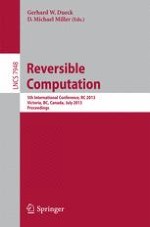2013 | Buch
Reversible Computation
5th International Conference, RC 2013, Victoria, BC, Canada, July 4-5, 2013. Proceedings
herausgegeben von: Gerhard W. Dueck, D. Michael Miller
Verlag: Springer Berlin Heidelberg
Buchreihe : Lecture Notes in Computer Science
